
Spring is the growth season for your lawn. Taking the right steps now will ensure a lush and vibrant lawn all summer long.
The arrival of spring brings with it a perfect combination of gentle rains and bright sunlight creates a perfect environment for plants to flourish. However, as the temperature rises and the rain disappears, the summer season can bring about harsh conditions that may cause damage to your lawn. In order to ensure that your lawn remains healthy and green throughout the summer, it is important to take necessary measures during the spring. Here are some useful tips that can help you prepare your lawn for the summer heat and drought.
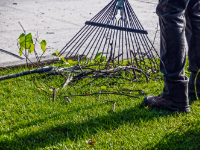
Remove Debris Fall and winter debris will impede your lawns growth while increasing the chance of insects and disease. Clean up the leaves, twigs and other debris that have gathered over the winter. Rakes work, but air blowers make the job easier. Your lawn will instantly look better and reduce the threat of insects of disease.
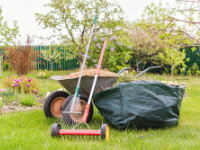
Dethatch Thatch is a layer of dead grass, moss, and other debris which forms at soil level. In small amounts, it’s a great fertilizer. However, excessive thatch can prevent nutrients and water from reaching the soil, suffocating grass growth and providing a nurturing environment for damaging grub larvae. Use a dethatching mower or rake if there’s more than 1/2 inch of dead grass and roots visible.
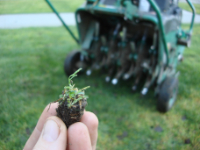
Aerate Aeration opens your lawn to breath, allowing oxygen, water and nutrients to penetrate deep into the soil. Core aeration is preferable to solid tines because it removes plugs of soil and thatch instead of compacting the soil with a punch aerator. Core aeration gives room for root growth while creating channels for water and nutrients to reach deep into the root system. Walk-behind, tow-behind and manual core aeration tools are available at your garden supply store or online.
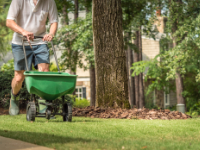
Fertilize Fertilizing in spring will give your lawn the nutrients needed to grow thick and green while developing a deep, robust root system that will stand up to the heat and drought of the summer season. There are differences in fertilizer so ask you garden supply store for recommendations for the type of grass in your lawn.
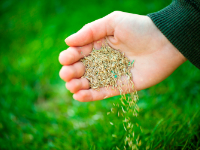
Seed Bare Spots A number of conditions may cause bare spots in your lawn including foot traffic, poor soil conditions, grub infestation, and more. Before you seed, make sure you understand the reason and address it first. Once the underlying cause is addressed, loosen the soil around the bare spot with a rake or other garden tool and remove, or blend in, any thatch. If there is a noticable indent, work in fresh top soil to blend and level out. Once prepared, hand-spread seeds at the recommended rate and lightly work them into the soil. Seedllings are delicate so avoid steppin on them, and keep them well watered for the first month to get them well established.
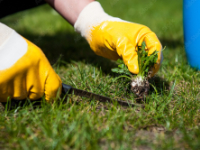
Treat Weeds Fertilizing your lawn will encourage your grass to grow thicker and help choke out weeds. Your hands and a good gardening tool like a dandelion digger or sickle blade are an effective, targeted way to kill weeds in a lawn. Weed early and often. Pulling weeds will be easier if you wet the soil before you week.
Organic herbicides can also be used, but cread labels carefully, they can also kill lawn. Most come with spray bottles for easy use and control.
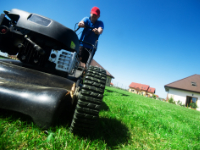
Mow Early & Often In spring, one of the big mistakes homeowners make is only mowing once a week. Letting grass grow too high before cutting stresses the grass and stunts root growth. Instead, mow every four or five days for the first six weeks of spring, depending on the weather, to ensure a thicker, fuller lawn.
Take these steps in spring to ensure your lawn will flourish all summer long.
If you have any landscaping needs, CLICK HERE to request a consultation.

